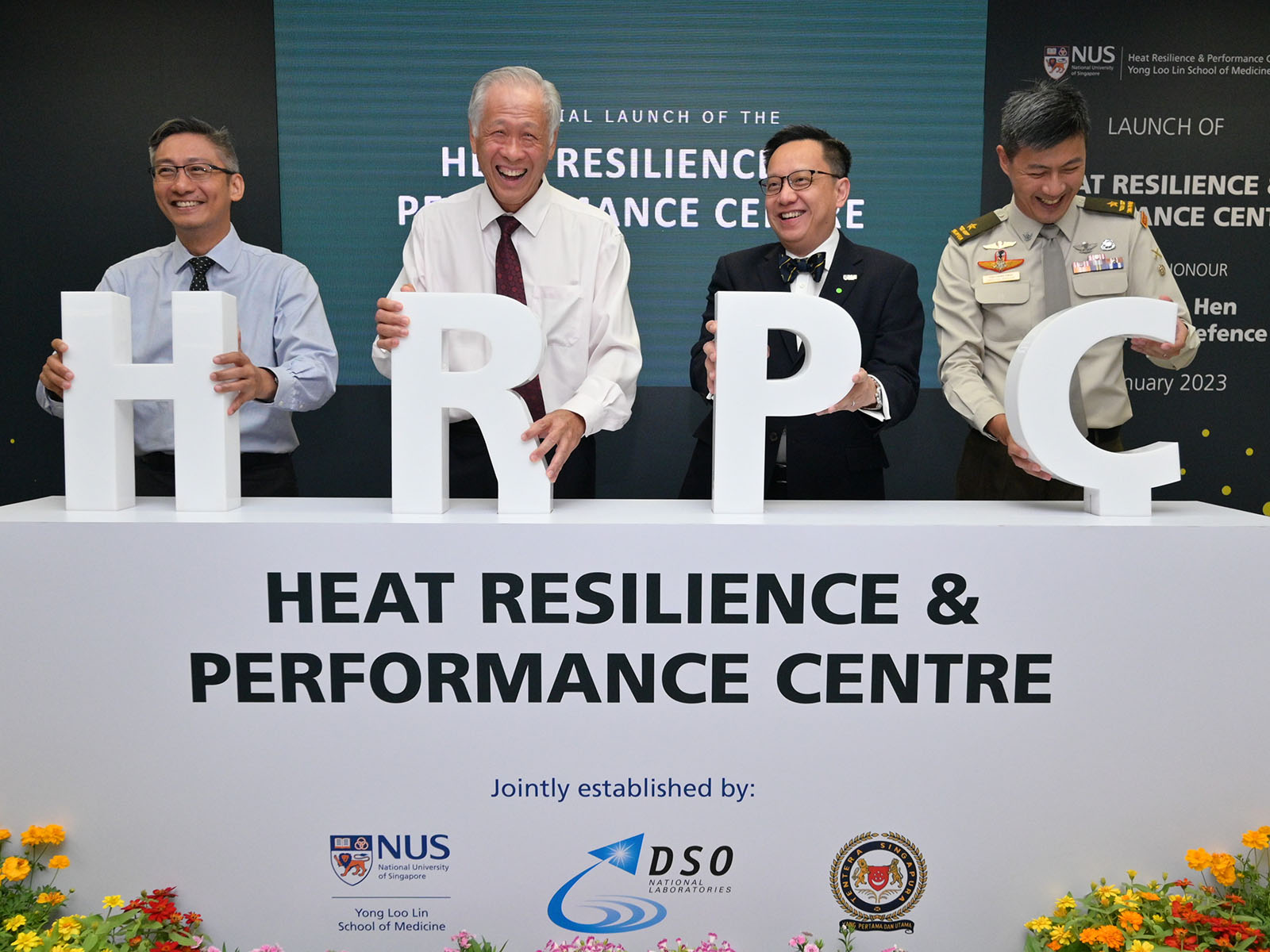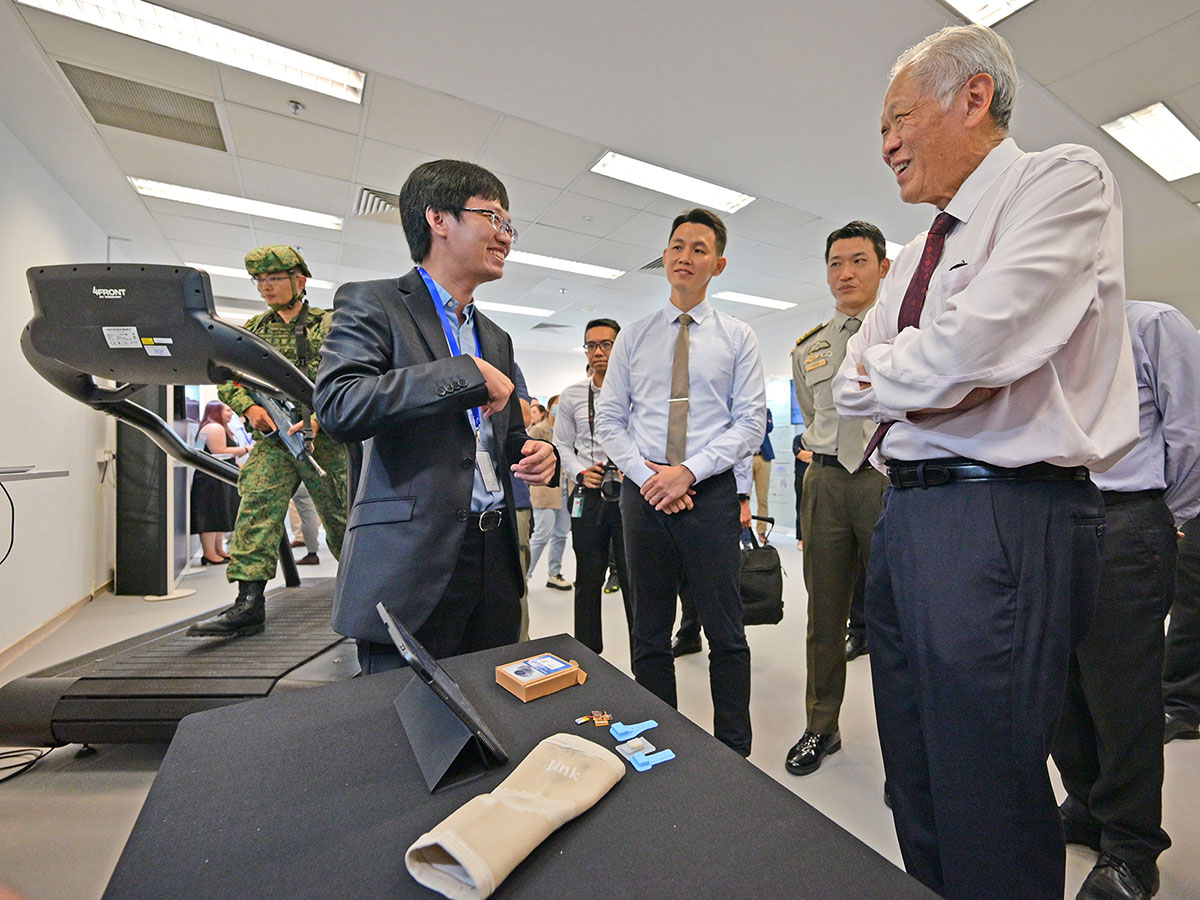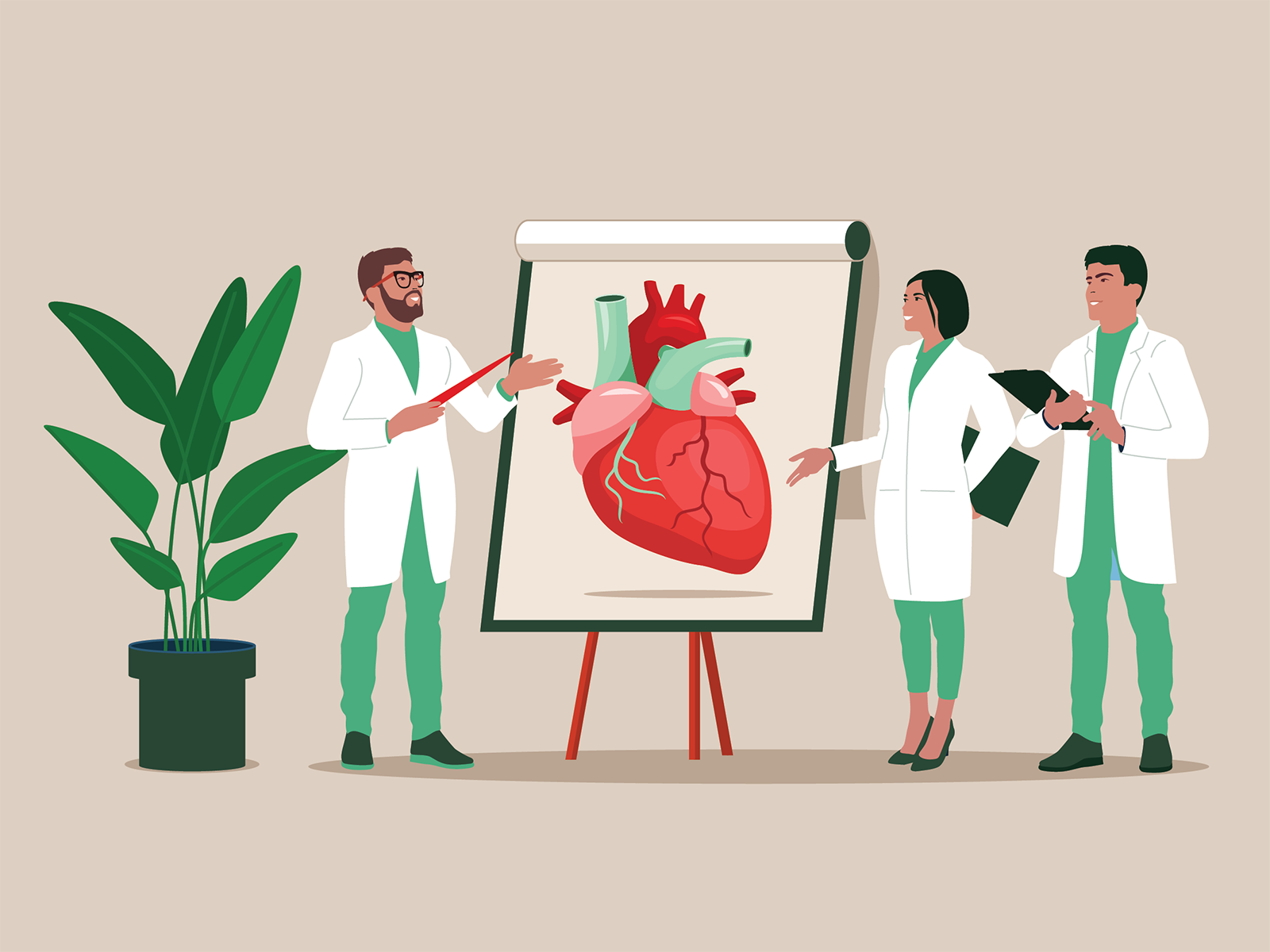
Issue 46
May 2023
DOSSIER

The Heat Resilience and Performance Centre (HRPC) was launched at the Yong Loo Lin School of Medicine, National University of Singapore (NUS Medicine) on 11 January 2023. HRPC is a tripartite collaboration between the Singapore Armed Forces (SAF), NUS, and DSO National Laboratories (DSO) to leverage best-in-class local and global expertise, including thermal physiologists and climate researchers, to address the long-term challenges of maintaining human performance amid rising temperatures in the region and the world.
Minister for Defence, Dr Ng Eng Hen, officiated at the launch and was briefed on various research strategies and ideas that HRPC would be exploring further, together with industry partners, to bolster heat resilience and performance in our soldiers. Dr Ng was also treated to a demonstration of data collection and analysis that used wireless body sensor networks.
“The pool of local experts in the field of heat injury prevention is limited. The HRPC will tap into the best-in-class researchers from both local and overseas… this work of HRPC will be increasingly important for the health of not only our soldiers but the general public as our ambient temperature rises,” said Minister for Defence Dr Ng Eng Hen, at the opening ceremony.
In addition to heat injuries and performance degradation, excessive heat stress can also compromise decision-making, leading to accidents. Not known to many, heat can be an enabler for physiological adaptations if we know how to use it correctly. HRPC seeks to add value to the expanding narrative of heat health and performance research to provide forward-looking solutions that proactively augment heat resilience in our people amid rising global temperatures.”
MINDEF/SAF/DSO doctors, scientists and engineers have been working with other national experts to deal decisively with and prevent heat injuries for the past decade.
Dr Ng highlighted that collaborating with HRPC is part of the SAF’s efforts to understand how to mitigate the impact of heat stress on soldiers so that they are able to continue to train and operate effectively and safely amid rising ambient heat. He highlighted how the tripartite partnership aims to further strengthen linkages between operations, technology and research institutions, tap into local and global expertise, and leverage key technology enablers like deep data science and artificial intelligence to develop innovative heat mitigation strategies.

Minister for Defence Dr Ng Eng Hen listening to a presentation on wireless body sensor networks by one of the exhibitors. The wireless body sensor network is able to capture and assess an individual’s heat status before he reaches the point of overexertion.
The HRPC is a dedicated, one-stop research entity that brings together subject matter experts from the local defence ecosystem and NUS Medicine, to drive and conduct heat resilience and performance research together with its partners, for the benefit of the general population. The centre will contribute to and leverage national efforts to support new and existing national initiatives to meet and mitigate similar challenges related to rising global temperatures.
“In addition to heat injuries and performance degradation, excessive heat stress can also compromise decision-making, leading to accidents. Not known to many, heat can be an enabler for physiological adaptations if we know how to use it correctly. HRPC seeks to add value to the expanding narrative of heat health and performance research to provide forward-looking solutions that proactively augment heat resilience in our people amid rising global temperatures,” Associate Professor Jason Lee, Director of HRPC, explained.
Research foci of HRPC
Build a robust database through the aggregation and analysis of existing and emerging data that allows the development and continuous refinement of physiological research models.
i. |
Data Aggregation: Physiological data from past and prospective projects will be consolidated for further research to find innovative approaches for active surveillance, continuous monitoring, and data collection. |
ii. |
Data Analysis: Aggregated data will be analysed to build predictive models to test research hypothesis. Such hypothesis will help to develop new strategies to interpret and transform data into new knowledge and new capabilities. |
Develop the capability to visualise and interpret the heat-health status of individuals in real-time, allowing for the development of personalised training programmes for heat management, active risk management and training optimisation.
i. |
Heat Health Visualisation: New approaches toward physiological sensing will be explored to increase accuracy in predicting and managing the risk of exertional heat injury. Physiological data specific to the causative mechanisms of exertional heat injury will be investigated. Research will also focus on exploring methods to increase the fidelity of physiological sensing by leveraging on the concept of a sensor network to build a more comprehensive heat health map to better analyse the heat health status of an individual. |
ii. |
Training Personalisation: Further research will utilise deep data analytics to develop predictive models and algorithms, indices, and decision support systems. |
Explore different advanced technologies and approaches to develop more efficient strategies for heat resilience in humans, guided by in-depth understanding of physiology, biology, psychology, as well as the social and behavioural responses to rising heat.
i. |
Advanced Material Technologies: New technologies in advanced materials can potentially be used to enhance body cooling, either actively or passively. Examples include adaptive fabrics which change structures in response to environmental conditions, and super hygroscopic nano fabrics to absorb moisture. |
ii. |
Role of Gut Microbiome: Microorganisms in our intestines, or the gut microbiome, may have a significant role in a human’s heat health and could be a potential indicator of heat stress. Investigations into this area of study can allow us to predict and improve heat resilience through measuring and manipulating the gut flora. |
iii. |
Urban Heat Effect of Environments and Urban Infrastructure on Humans: Understanding the urban heat effect of environments and buildings through the development of virtual models that provide insights on how infrastructure can be used to improve passive heat resilience and promote active cooling. |
More from this issue
SCIENCE OF LIFE
Mitral Valve Surgery – A Better Way

ETHICALLY SPEAKING
Who Should We Hold Responsible When AI Goes Wrong?


